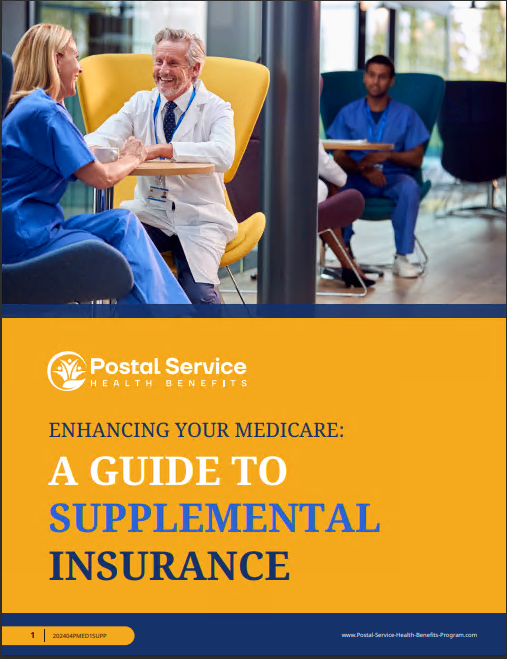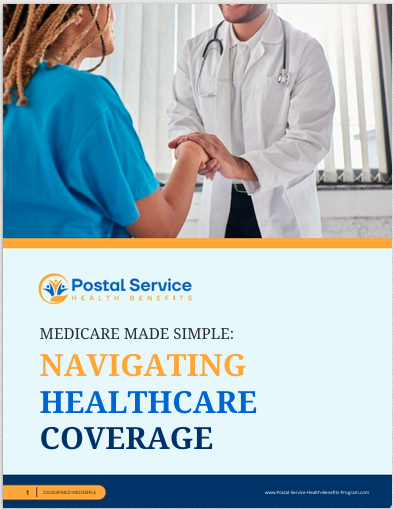Key Takeaways
-
PSHB plans offer unique benefits tailored specifically for postal workers, including cost-saving opportunities when integrated with Medicare.
-
Comparing PSHB to other health insurance options reveals how its features cater to the needs of USPS employees and retirees.
Why PSHB Plans Are a Game-Changer for USPS Employees
The Postal Service Health Benefits (PSHB) program is a significant shift in healthcare for USPS employees, retirees, and their families. Replacing the Federal Employees Health Benefits (FEHB) program, PSHB is designed to address the unique needs of the postal workforce. Understanding these benefits helps you determine whether PSHB is the right fit and how it compares to other options available.
Enhanced Affordability with Government Contributions
One of the biggest advantages of PSHB plans is the government’s substantial contribution toward premiums, covering approximately 70% of the costs. This support makes the program more affordable compared to private market plans. For postal workers and retirees, this reduces the financial burden of maintaining comprehensive health coverage.
The program’s tiered structure—Self Only, Self Plus One, and Self and Family—ensures you can select a plan that matches your specific household needs without overpaying. In comparison, private plans often come with higher premiums and less consistent employer contributions.
Tailored Benefits for USPS Employees and Retirees
PSHB plans aren’t just about affordability; they’re tailored to meet the specific requirements of postal workers. These plans often include:
-
Comprehensive Network Coverage: You can access a vast network of in-network providers with minimal out-of-pocket costs, ensuring you receive quality care without surprise expenses.
-
Prescription Drug Savings: PSHB integrates prescription drug coverage seamlessly, particularly benefiting those who are Medicare-eligible.
-
Coordination with Medicare: If you’re eligible for Medicare Part B, many PSHB plans waive deductibles and reduce copayments, providing extra savings.
Copayments, Deductibles, and Coinsurance: A Balanced Approach
PSHB offers predictable costs through structured copayments, deductibles, and coinsurance rates. For instance, copayments for primary care visits typically range from $20 to $40, while specialist visits are slightly higher. Emergency room visits and urgent care also come with fixed costs, ensuring affordability even during unforeseen medical events.
Coinsurance percentages for in-network services usually range between 10% and 30%, which is significantly lower than the 40%-50% charged for out-of-network services. Compared to private plans, this balance ensures better cost predictability without compromising quality care.
Comparing PSHB to Other Health Insurance Programs
Understanding how PSHB measures up against other health insurance programs is crucial. Let’s explore key differences.
PSHB vs. FEHB
While FEHB served USPS employees well, PSHB introduces several enhancements:
-
Dedicated to Postal Workers: Unlike FEHB, PSHB is exclusively designed for USPS employees, retirees, and their eligible dependents.
-
Cost Efficiency: With government contributions and Medicare integration, PSHB plans often result in lower overall costs.
-
Simplified Enrollment: Transitioning to PSHB streamlines the enrollment process, especially for those already eligible for Medicare.
PSHB vs. Private Health Plans
Private health insurance often lacks the affordability and tailored features of PSHB. Key differences include:
-
Premium Costs: PSHB premiums are partially subsidized, making them more economical compared to private plans.
-
Benefit Customization: PSHB offers specific benefits like reduced prescription drug costs through Medicare integration, which private plans may not match.
-
Consistency: Private plans can vary widely in cost and coverage, whereas PSHB provides uniform benefits across all enrollees.
PSHB vs. Medicare Advantage Plans
Medicare Advantage plans appeal to some retirees but don’t always stack up against PSHB. Here’s why:
-
Out-of-Pocket Caps: PSHB introduces a $2,000 cap on out-of-pocket prescription drug costs under Medicare Part D, offering financial relief that many Medicare Advantage plans don’t.
-
Plan Stability: PSHB plans are designed with postal workers’ needs in mind, offering consistent coverage even as your health needs evolve.
Maximizing Benefits with Medicare Integration
For Medicare-eligible annuitants and their families, PSHB offers significant advantages. Here’s how you can make the most of this integration:
-
Part B Enrollment: If you’re eligible for Medicare, enrolling in Part B is a prerequisite for maintaining PSHB coverage. This ensures seamless coordination between the two programs, enhancing your benefits.
-
Reduced Costs: PSHB plans waive or lower deductibles and copayments when paired with Medicare, saving you money on routine and specialized care.
-
Prescription Drug Coverage: Automatic enrollment in a Medicare Part D Employer Group Waiver Plan (EGWP) means you’ll benefit from lower out-of-pocket prescription costs.
Key Enrollment Timelines and Deadlines
To benefit fully from PSHB, it’s important to stay on top of enrollment periods and deadlines:
-
Annual Open Season: Typically running from mid-November to mid-December, this is your opportunity to select or change your PSHB plan.
-
Medicare Coordination: Ensure your Medicare Part B enrollment aligns with your PSHB plan’s requirements. Missing this step could result in gaps in coverage or penalties.
-
Qualifying Life Events (QLEs): Events like marriage, divorce, or the birth of a child allow you to adjust your coverage outside of the standard Open Season.
How PSHB Plans Address Long-Term Care Needs
Healthcare needs often increase with age, and PSHB plans provide a strong safety net. While they don’t directly cover long-term care, their coordination with Medicare can help manage costs for extended hospital stays, skilled nursing facilities, and outpatient treatments. Additionally, enrollees can explore supplemental long-term care insurance options to complement their PSHB benefits.
Balancing Dental and Vision Needs
Unlike some private plans that offer limited or optional dental and vision coverage, PSHB ensures comprehensive access through the Federal Employees Dental and Vision Insurance Program (FEDVIP). This means you can choose from nationwide dental and vision providers, tailoring coverage to your needs.
Addressing Prescription Drug Costs in 2025
One of the most notable updates for 2025 is the $2,000 cap on out-of-pocket prescription drug costs under Medicare Part D. This cap eliminates the financial burden of high-cost medications, a relief for enrollees with chronic conditions or specialized treatment needs. By spreading out-of-pocket drug costs over the calendar year, PSHB ensures affordability and predictability.
Making the Most of Preventive Services
Preventive care is a cornerstone of PSHB plans. By covering annual check-ups, immunizations, and screenings at no additional cost, the program helps you stay proactive about your health. This benefit aligns with Medicare’s emphasis on prevention, creating a seamless healthcare experience for eligible enrollees.
What Happens If You Don’t Enroll in Medicare Part B?
For Medicare-eligible retirees and family members, enrolling in Part B is mandatory to maintain PSHB coverage. Failure to enroll can result in:
-
Higher Costs: Without Part B, you’ll miss out on cost-sharing reductions and waived deductibles.
-
Loss of Coverage: PSHB requires Part B enrollment for seamless benefits. Skipping this step could leave you without essential healthcare support.
Navigating the Transition from FEHB to PSHB
Transitioning from FEHB to PSHB requires some planning, but the process is designed to be straightforward:
-
Automatic Enrollment: Current FEHB participants are automatically transitioned to corresponding PSHB plans unless changes are made during Open Season.
-
Reviewing Plan Options: Take the time to compare plans and ensure your choice aligns with your healthcare needs.
-
Understanding Coverage Details: Familiarize yourself with PSHB’s specific benefits, particularly how they coordinate with Medicare.
Why PSHB Stands Out in 2025
As USPS employees and retirees navigate healthcare options in 2025, PSHB emerges as a top choice. Its tailored benefits, affordability, and seamless Medicare integration make it a standout option. By staying informed and proactive, you can maximize these benefits and ensure comprehensive health coverage for you and your family.







